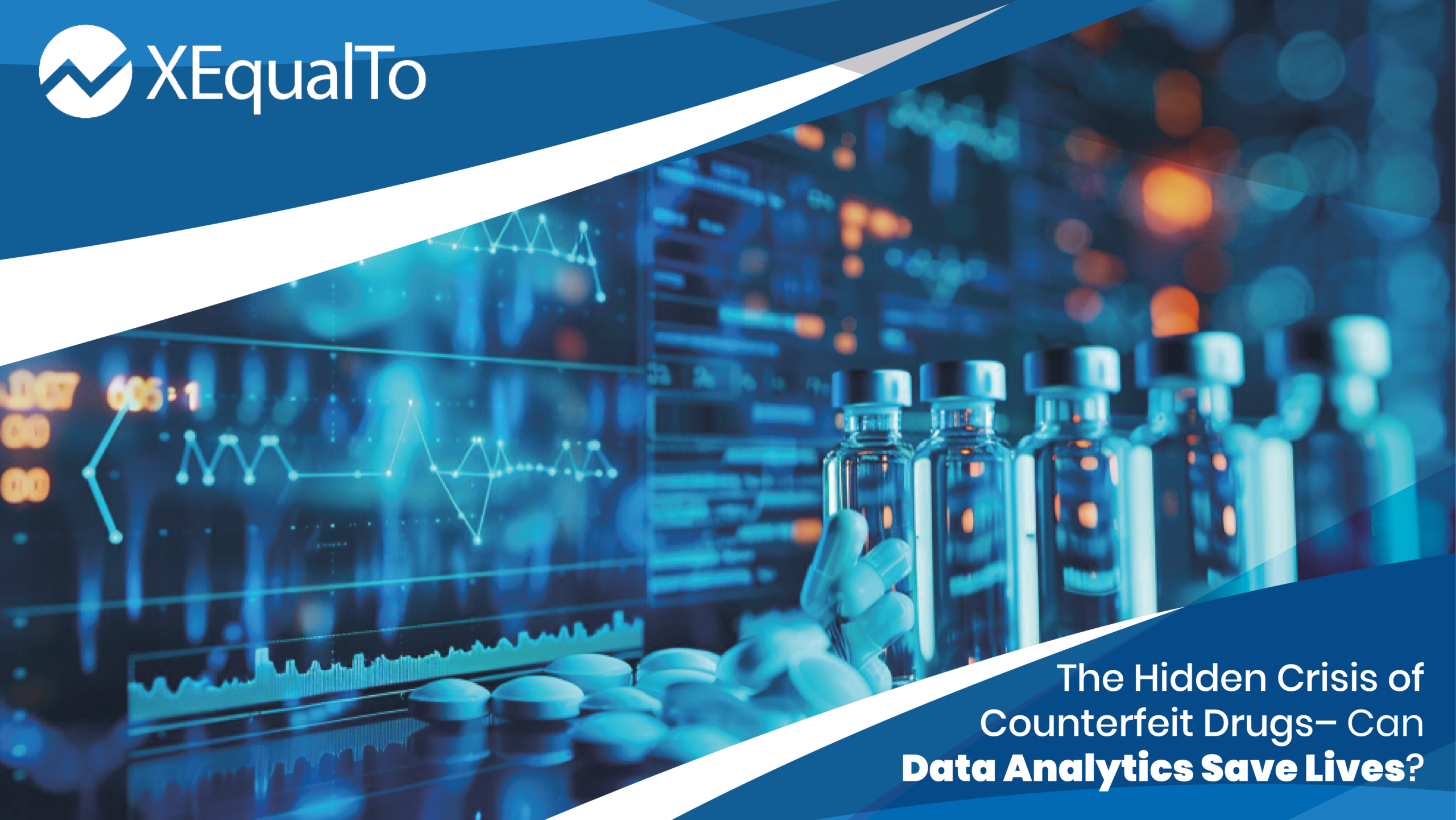The Growing Threat of Counterfeit Drugs
Imagine you’re sick. You take a pill, expecting to feel better. But what if that pill was fake? What if it made you worse? This is the scary reality of counterfeit drugs, a problem that’s growing around the world.
The World Health Organization says about 1 in 10 medicines in poorer countries are fake or poorly made. These counterfeit pills might have the wrong ingredients, not enough medicine, or even harmful stuff. This leads to people staying sick, getting sicker, or even dying.
So, how do we stop this? The answer is smart technology or data analytics. Let’s see how it’s making a difference.
How Data Analytics is Strengthening Drug Safety
1. Enhancing Supply Chain Transparency with Blockchain
One of the most effective ways to prevent counterfeit drugs from entering the market is to secure the pharmaceutical supply chain. Companies leverage blockchain technology and data analytics to track a drug’s journey from manufacturing to the end consumer.
- Blockchain provides a tamper-proof record of each transaction, preventing unauthorized alterations.
- Real-time tracking enables quick identification of discrepancies in drug distribution.
- Regulatory bodies can verify the authenticity of drugs at every stage of the supply chain.
Leading pharmaceutical firms are already integrating blockchain-based solutions to enhance drug traceability and reduce the risk of counterfeit infiltration.
2. Identifying Risks with Predictive Analytics
Counterfeit drugs often follow identifiable distribution patterns. Predictive analytics uses historical data and machine learning models to detect potential risks before they escalate.
- Sales patterns and distribution anomalies can indicate counterfeit drug activity.
- Data analytics can highlight inconsistencies in supply chain records, signaling potential fraud.
- Market trends can be analyzed to predict where counterfeit drugs are likely to emerge next.
By proactively identifying risks, pharmaceutical companies, and regulators can take preventive action, disrupting counterfeit operations before they cause harm.
3. AI-Powered Drug Authentication
Ensuring drug authenticity is a major challenge, but artificial intelligence (AI) is making verification more efficient. AI-driven image recognition technology is being used to detect counterfeit drugs by analyzing packaging, barcodes, and labeling.
- AI tools can verify whether drug packaging matches the original manufacturer’s specifications.
- Machine learning algorithms can detect signs of tampering or mislabeling.
- Consumers and pharmacists can use mobile applications to scan and validate drugs before use.
By integrating AI-powered authentication, pharmaceutical companies can create an additional layer of security to protect consumers.
4. Monitoring Online Pharmacies and E-Commerce Platforms
With the rise of online drug purchases, counterfeiters have increasingly turned to digital marketplaces to distribute fake medicines. Data analytics plays a crucial role in identifying fraudulent sellers and removing counterfeit drug listings from online platforms.
- AI-powered monitoring systems scan websites and e-commerce platforms for unauthorized drug listings.
- Machine learning models analyze seller behavior and flag suspicious accounts.
- Regulators use web scraping techniques to track counterfeit drug advertisements and take action against violators.
This approach helps prevent counterfeit drugs from reaching consumers through online channels, a growing concern in the digital age.
5. Real-Time Adverse Event Detection
In many cases, counterfeit drugs are only detected after consumers experience unexpected side effects. Data analytics enables real-time monitoring of adverse drug reactions, allowing for faster identification of counterfeit products.
- Social media and online health forums are analyzed for reports of unexpected drug inefficacy or side effects.
- Pharmacists and healthcare providers can report irregularities, triggering further investigation.
- Real-time data aggregation helps regulatory bodies respond quickly to potential counterfeit threats.
By continuously monitoring real-world drug usage data, authorities can take immediate corrective action when counterfeit drugs are suspected.
A Data-Driven Future for Drug Safety
As counterfeit drug threats evolve, data analytics is becoming an indispensable tool in safeguarding global pharmaceutical supply chains. Advancements in AI, blockchain, and predictive analytics are providing innovative solutions to detect and prevent counterfeit drug distribution.
Looking ahead, the integration of automated tracking systems, AI-powered authentication, and enhanced regulatory collaboration will further strengthen drug safety measures. The pharmaceutical industry must continue investing in data-driven technologies to protect consumers and ensure that every drug on the market is both safe and effective.
The fight against counterfeit drugs is ongoing, but with the power of data analytics, it can be won.
At XEqualTo Analytics, we specialize in harnessing advanced analytics, AI, and blockchain to drive real-time insights and enhance pharmaceutical security.
Contact us today to learn how data-driven strategies can help protect your consumers and your brand. Let’s build a safer future together!
